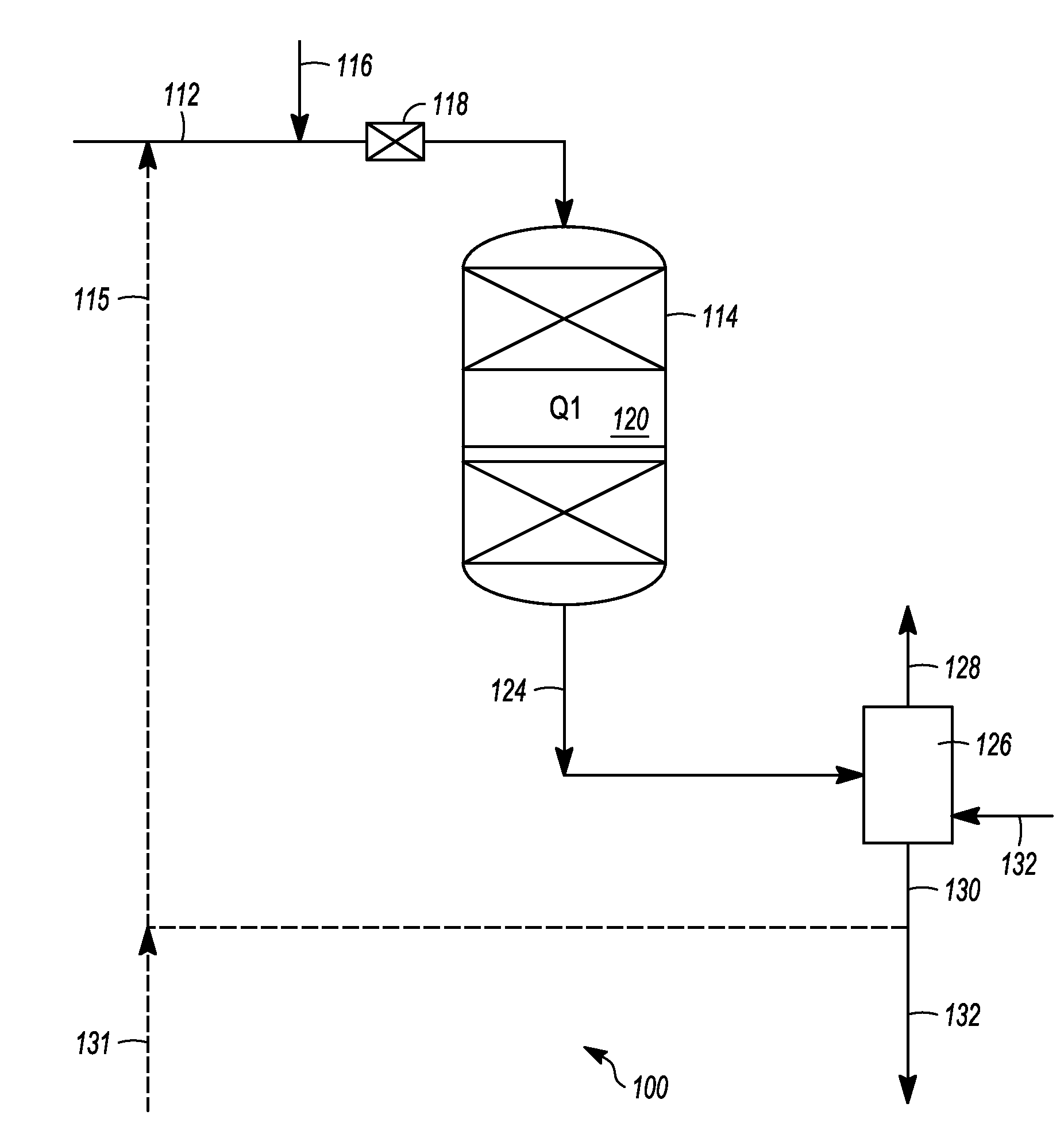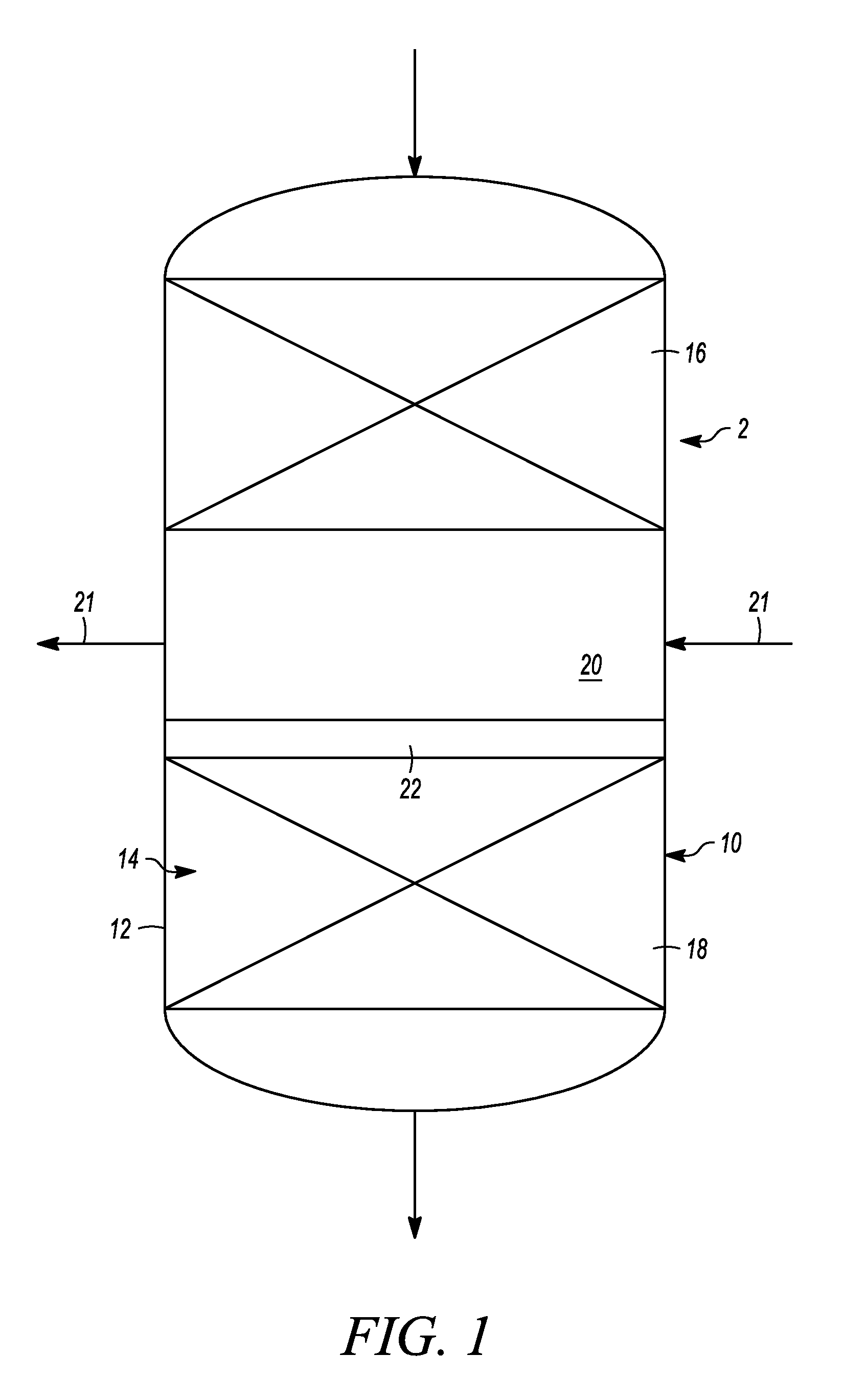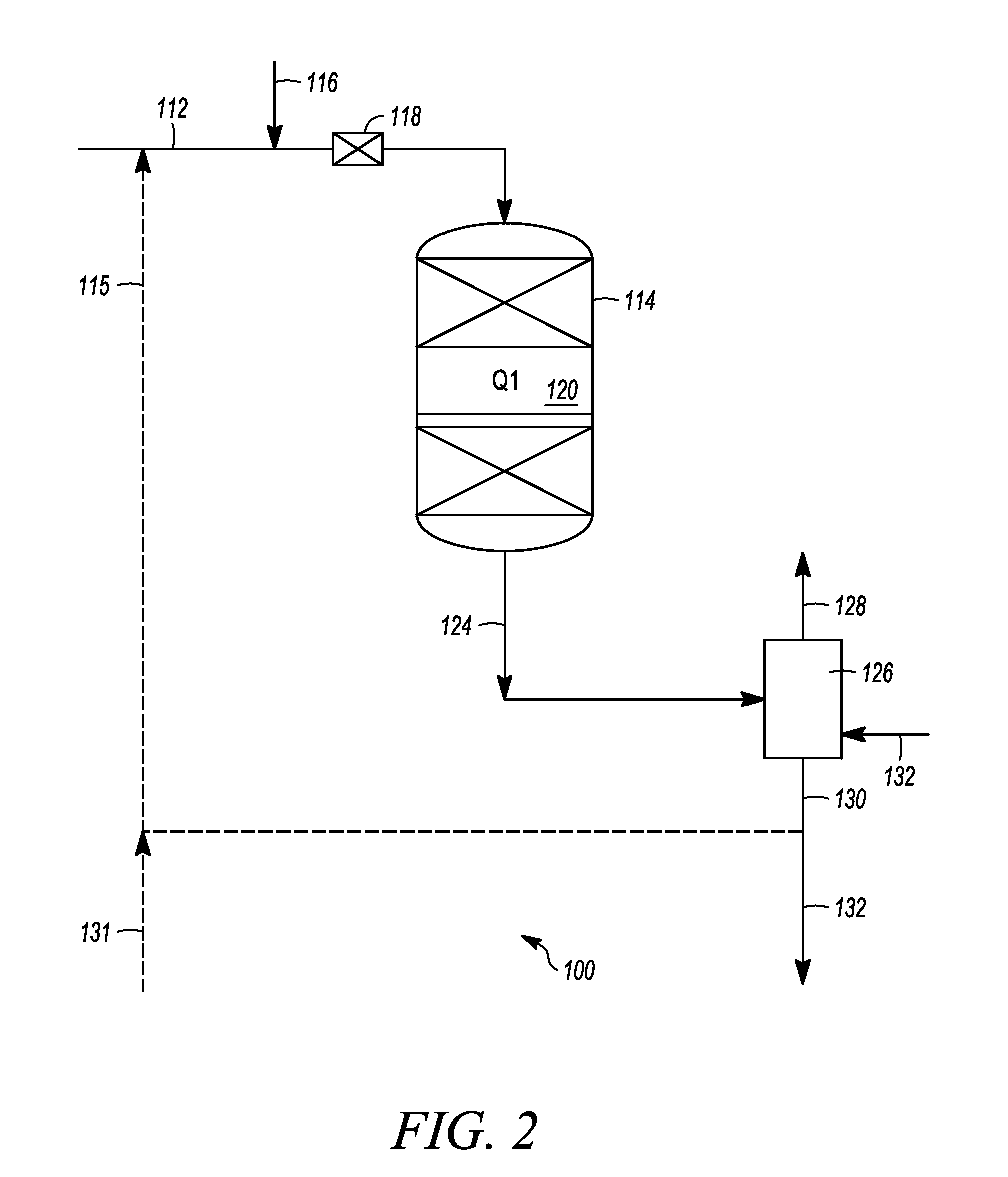Liquid Phase Hydroprocessing With Temperature Management
a liquid phase hydroprocessing and temperature management technology, applied in the direction of organic chemistry, physical/chemical process catalysts, chemistry apparatus and processes, etc., can solve the problem of over-complexity of the hydroprocessing uni
- Summary
- Abstract
- Description
- Claims
- Application Information
AI Technical Summary
Benefits of technology
Problems solved by technology
Method used
Image
Examples
Embodiment Construction
[0019]In general, hydroprocessing systems and methods described herein are particularly useful for hydroprocessing a hydrocarbonaceous feed stock containing hydrocarbons and / or other organic materials to produce a product containing hydrocarbons and / or other organic materials of lower average boiling point, lower average molecular weight, and / or reduced concentrations of contaminants, such as sulfur and nitrogen and the like. In one aspect, the systems and methods use a substantially liquid-phase reaction zone with internal temperature management that eliminates, or substantially reduces, the need for the introduction of diluents or quench streams or additional fluids into the feed stream to the reaction zone to assist in managing the temperature of the feed and reaction zone. Accordingly, the systems and methods may operate without, or may operate with substantially reduced, recycle gases added to the feed stream, recycle gas compressors, liquid quench streams, and, in many instanc...
PUM
| Property | Measurement | Unit |
|---|---|---|
| pressure | aaaaa | aaaaa |
| pressure | aaaaa | aaaaa |
| pressure | aaaaa | aaaaa |
Abstract
Description
Claims
Application Information
 Login to View More
Login to View More - R&D
- Intellectual Property
- Life Sciences
- Materials
- Tech Scout
- Unparalleled Data Quality
- Higher Quality Content
- 60% Fewer Hallucinations
Browse by: Latest US Patents, China's latest patents, Technical Efficacy Thesaurus, Application Domain, Technology Topic, Popular Technical Reports.
© 2025 PatSnap. All rights reserved.Legal|Privacy policy|Modern Slavery Act Transparency Statement|Sitemap|About US| Contact US: help@patsnap.com



